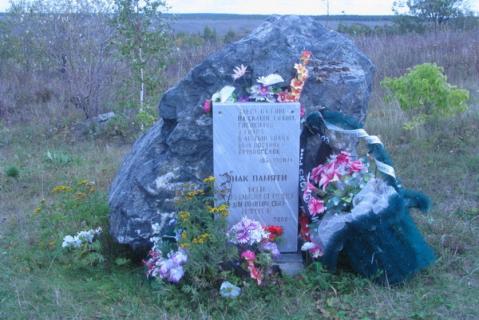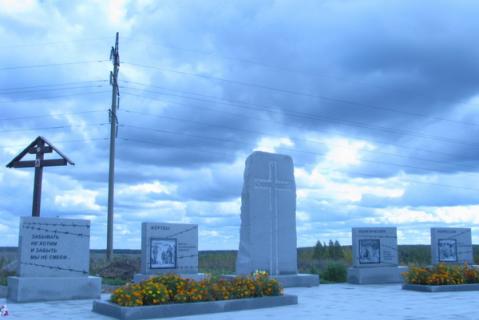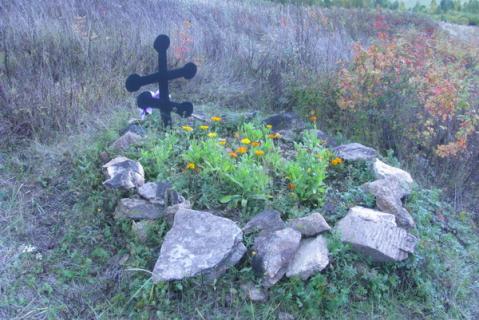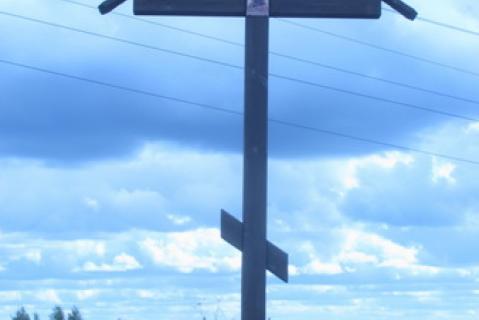In 1931, a labour settlement for dekulakized peasant families was set up in the Kushva district. The cemetery was 500 metres from the settlement on the slopes of Mount Golaya. During winter 1931/1932 forced settlers who died of hunger and from an epidemic of typhoid were buried in mass graves, later in individual graves. The numbers of men, women and children who died and were buried then is not known.
In 1944-1946, German forced labourers from Tagillag and Tavdinlag were relocated to the special settlement to work in the Goroblagotdatsky mine in Kushva (details of their relocation are not available). The settlement was closed as an inhabited area in 1960 and today it forms part of the Kushva urban district.
In 2006, a memorial was erected in the cemetery, a wooden golubets-cross and a boulder with a marble plaque reading, “Here on this bare slope of this hill a labour settlement was built by special settlers facing hunger and bitter cold (1931-1960)”. In 2012, the Kushva town administration laid out a memorial complex to the victims of political repression in the Kushva district, composed of five granite pillars. The central pillar bears an image of a cross. The two pillars to either side carry the inscriptions: “We do not want or dare to forget”, “To the victims of political repression”, “450 forced labourers”, “8,000 [condemned] for their social class”, “290 during the Great Terror”.
The electronic Book of Remembrance of Russian Germans (Gedenkbuch) contains biographical entries on more than 100,000 Soviet Germans sentenced under Article 58, or who were deported as forced settlers, or mobilised in camps of forced labourers.
The 2025 Memorial online database (2025) names 38,697 victims in the Sverdlovsk Region (BR 36,494), half of whom were local residents. See Yekaterinburg memorial.
Drawing on a variety of sources the database names 12 “dekulakised” and sent to Kushva in 1930. It lists 13,162 deported to the Sverdlovsk Region from all over the USSR: 6,276 were “dekulakised” or born in special settlements; More than half of the 589, later deported by reason of their “nationality”, were German.
| Date | Nature of ceremonies | Organiser or responsible person | Participants | Frequency |
|---|---|---|---|---|
|
30 Oct.
|
Remembrance Day for the Victims of Political Repression
|
Kuvsha town administration
|
town officials, descendants of forced settlers, schoolchildren
|
Annual event
|
| State of burials | Area | Boundaries |
|---|---|---|
|
Three nameless headboards have survived
|
not established
|
not delineated
|
[ original texts and hyperlinks ]
N.N. Smolina, These are lines from our history, Kushva, 2011
Olga Sidorova, “A memorial to the victims of political repression has been unveiled on Mount Golaya”, Kushva online, 17 July 2012 [retrieved, 10 January 2025]
*
Reply from the Kushva urban district department of culture, 6 May 2015, to a formal enquiry by RIC Memorial (St Petersburg)




